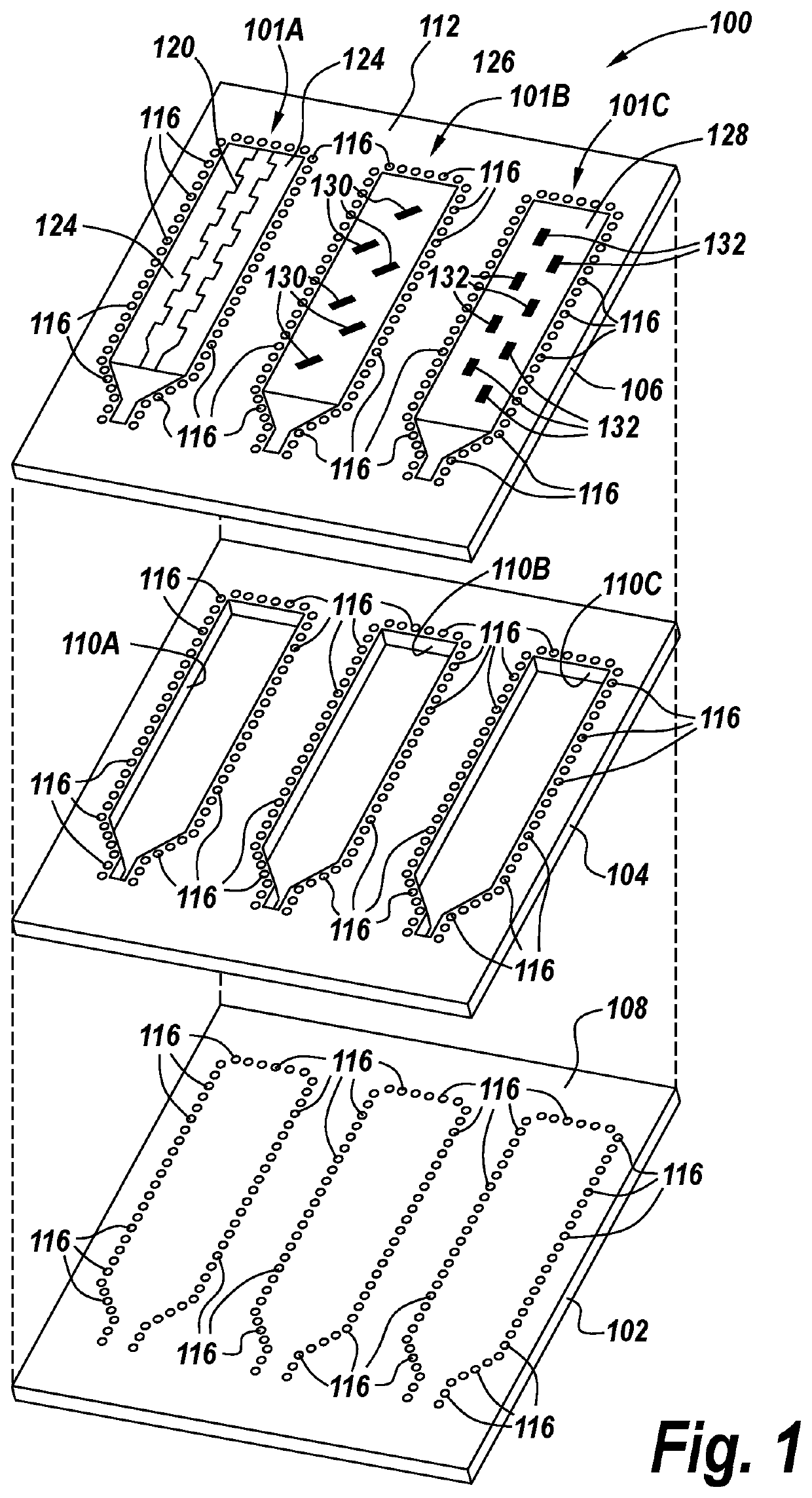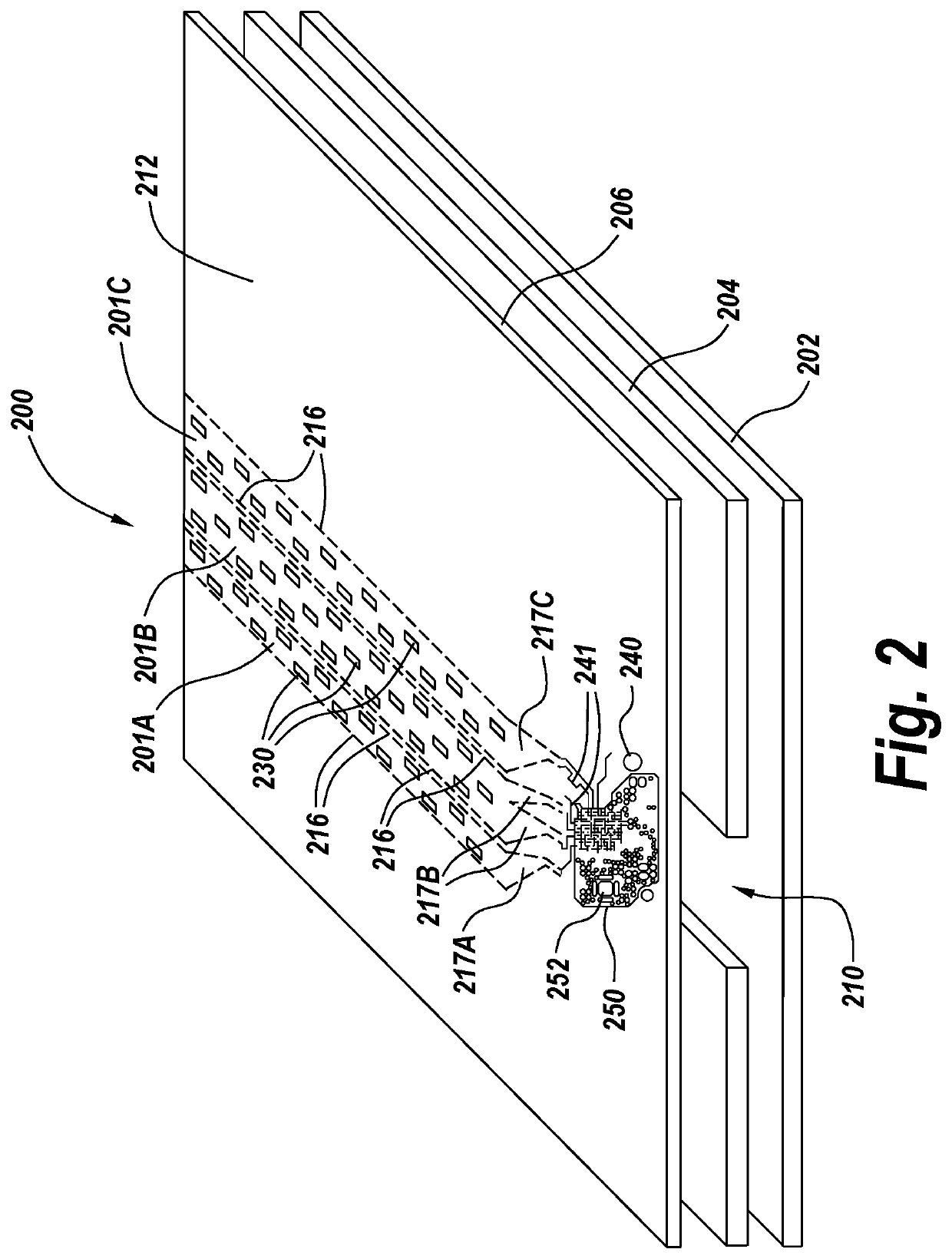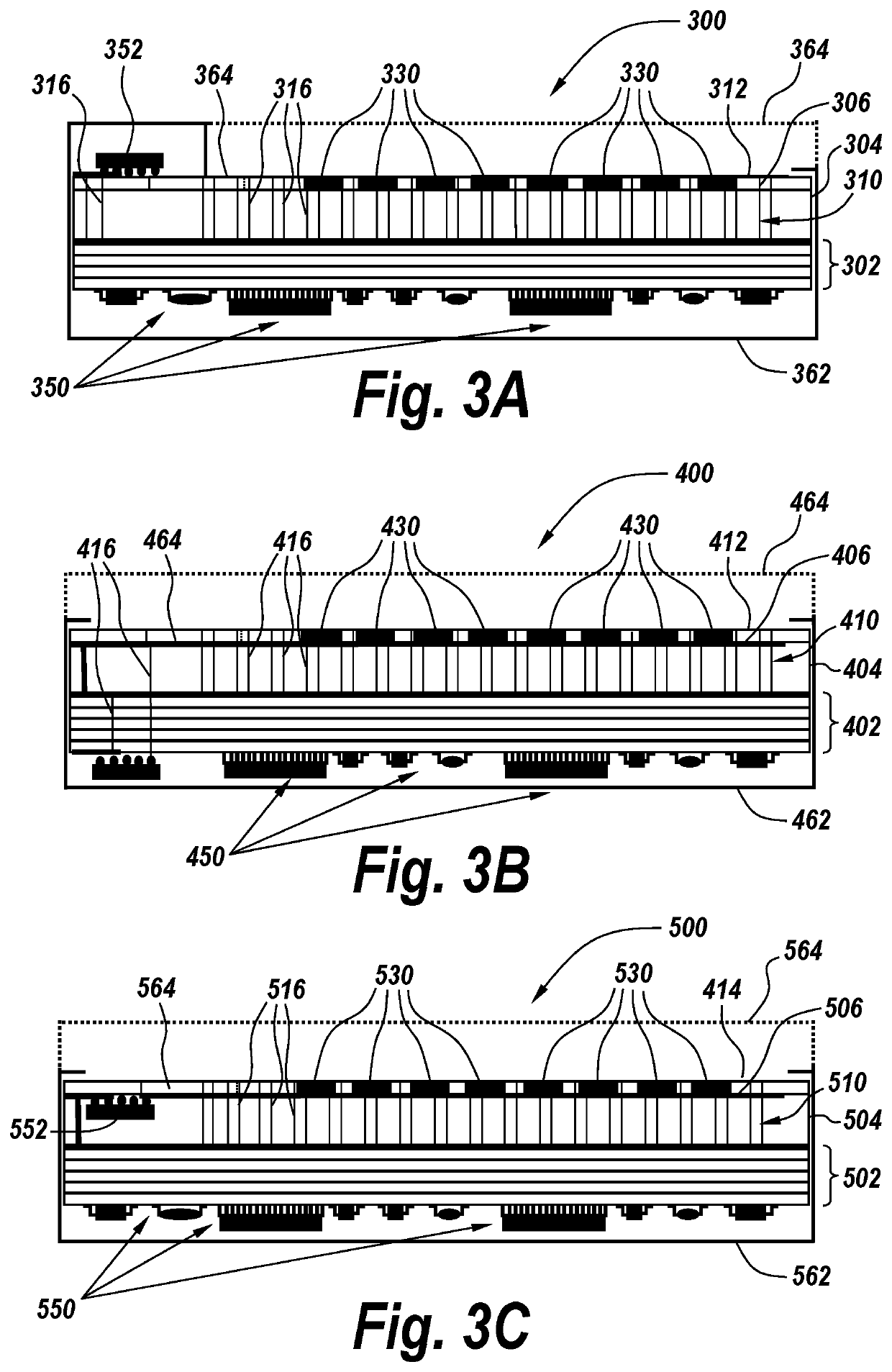System and Method with Multilayer Laminated Waveguide Antenna
a multi-layer laminated, antenna technology, applied in waveguides, waveguide mouths, waveguide type devices, etc., can solve the problems of high-frequency rf materials, feed lines, strip lines, and overall degradation of rf antenna components and/or rf front end components, and can be very expensiv
- Summary
- Abstract
- Description
- Claims
- Application Information
AI Technical Summary
Benefits of technology
Problems solved by technology
Method used
Image
Examples
Embodiment Construction
[0022]According to the present disclosure, automotive radar sensor modules are provided with a low-cost solution for the antenna(s) and RF front end based on low-cost commonly used laminates, such as FR4, to perform at higher frequencies used in automotive radar solutions, e.g., 24 GHz and / or 76-81 GHz, without the need to utilize high-cost, high-frequency substrates. This solution can also include the digital circuitry in a single-board format and, hence, provide a compact complete solution. According to the exemplary embodiments, since the more expensive laminate materials, such as Astra® MT77, Rogers RO3003 or RO4350, or other similar materials are not used, and only standard printed circuit board fabrication techniques are required, the cost and complexities of fabrication are significantly reduced, while the RF performance is maintained or improved.
[0023]According to the present disclosure, waveguides such as rectangular waveguides are structured by stacking laminates or layers...
PUM
| Property | Measurement | Unit |
|---|---|---|
| frequencies | aaaaa | aaaaa |
| frequencies | aaaaa | aaaaa |
| thickness | aaaaa | aaaaa |
Abstract
Description
Claims
Application Information
 Login to View More
Login to View More - R&D
- Intellectual Property
- Life Sciences
- Materials
- Tech Scout
- Unparalleled Data Quality
- Higher Quality Content
- 60% Fewer Hallucinations
Browse by: Latest US Patents, China's latest patents, Technical Efficacy Thesaurus, Application Domain, Technology Topic, Popular Technical Reports.
© 2025 PatSnap. All rights reserved.Legal|Privacy policy|Modern Slavery Act Transparency Statement|Sitemap|About US| Contact US: help@patsnap.com



